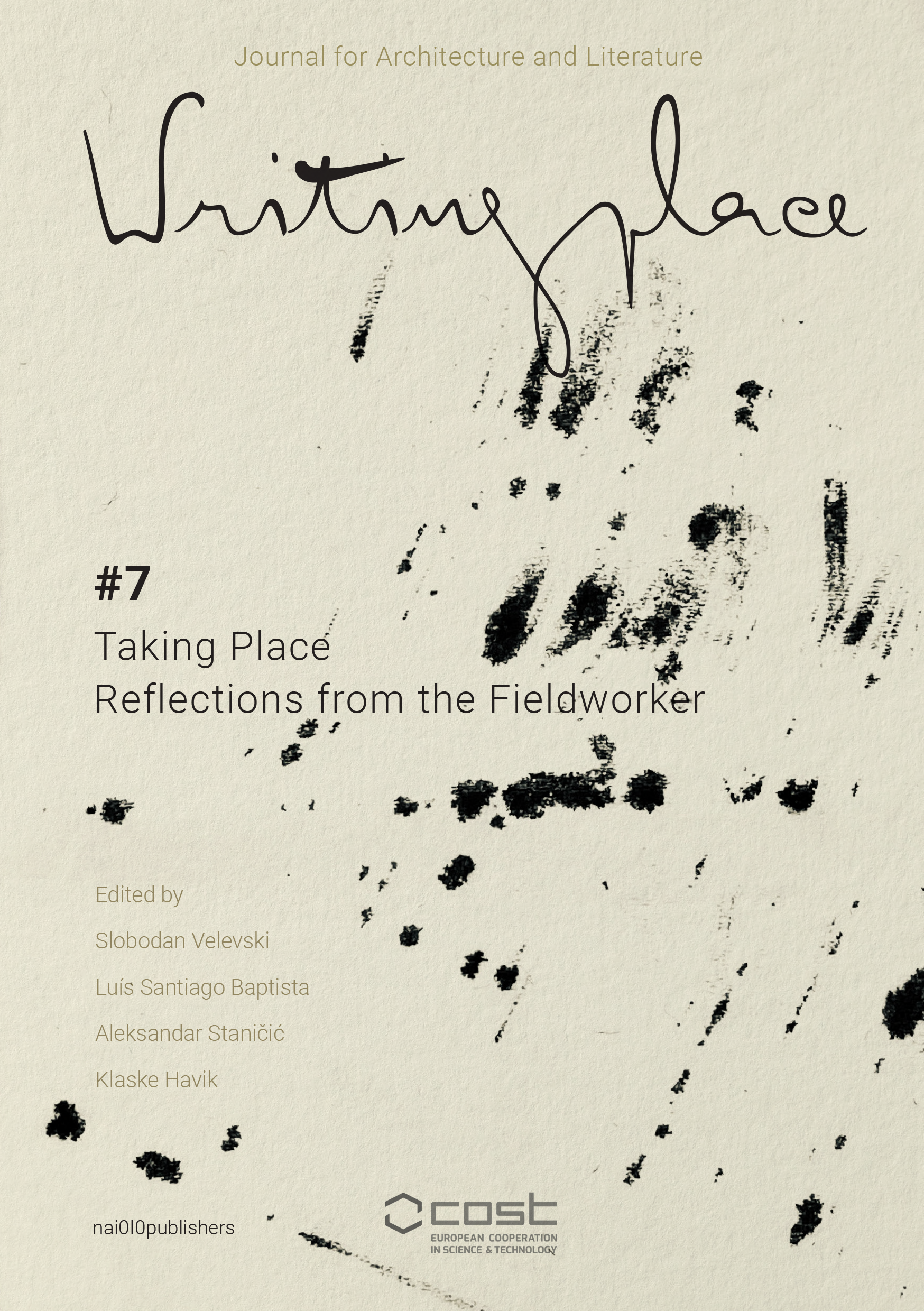Weaving Ensembles
Remembering and Finding Stories for the Factory
DOI:
https://doi.org/10.7480/writingplace.7.6463Keywords:
Factory, weaving ensembles, remember, stories, reimaginationAbstract
This essay builds upon long-term practice-based research developed around Coelima, a textile complex founded in 1922 near Guimarães in Portugal, to explore the performative qualities of collective hand-weaving practices, or weaving ensembles, as collaborative practices of architectural fieldwork. The essay is structured into three parts. First, it draws on anthropologist Paul Connerton's argument that memory resides more in ‘incorporated memory practices’ (Connerton, 1989) rather than objects, to argue that weaving with Coelima workers and local agents can become an innovative mode of remembering and finding memories of the factory's life. The ensembles are explored as ‘events of the thread’ (Albers, 2017) to re-build the factory's unwritten and unsettling history since its deep economic crisis in 1991. Second, it discusses how two weaving capacities enacted in the ensembles – such as exchanging weaving skills on a re-designed loom and weaving’s duration – can benefit architects: to mediate memories and tacit knowledge while evoking long-term and ethical modes of ‘constructing’ stories rather than simply collecting them. Third, the paper suggests that weaving ensembles might be re-evaluated as creative practices of architectural fieldwork, which allow architects and planners to discover and use found stories as starting catalysts to reimagine the future of Coelima, and other places.
References
Adrian Forty and Susanne Küchler, The Art of Forgetting, Oxford, 1999.
Alessandro Portelli, ‘What Makes Oral History Different’, in: Alistair Thomson and Robert Perks (ed.), The Oral History Reader, London, 2003, p. 69.
Anne Karpf, The Human Voice: The Story of a Remarkable Talent, London, 2007, p. 4.
Anni Albers, On Weaving: New Expanded Edition, Princeton, 2017, p. XI.
Briony Fer, ‘Black Mountain College Exercises’, in: Ann Coxon, Briony Fer and Maria Muller-Schareck (ed.), Anni Albers, New Haven, 2018, p. 65.
Dolores Hayden, Power of Place, Cambridge, 2020, p. 47.
Donna J. Haraway, Staying with the Trouble: Making Kin in the Chthulucene, North Carolina, 2016.
Eric Broudy, The Book of Looms: A History of the Handloom from Ancient Times to the Present, Hanover, 1993, pp. 232-233.
Esser Jorge Silva, Fabricados na Fábrica. Uma narrativa operária do Séc. XXI, [Produced in the factory. A proletariat narrative of the XXI century], Vila Nova de Famalicão, 2012.
Indra Kagis McEwen, Socrates' Ancestor: An Essay on Architectural Beginnings, Cambridge, 1993, p. 109.
James A. Throgmorton, Planning as Persuasive Storytelling: The Rhetorical Construction of Chicago's Electric Future, Chicago, 1996.
Janina Gosseye, ‘Editorial’, Fabrications, 24/2 (2014), pp. 147-155.
Jesse Adams Stein, ‘The Co-construction of Spatial Memory’, Fabrications, 24/2 (2014), pp. 178-197.
John Peter, The Oral History of Modern Architecture: Interviews with the Greatest Architects of the Twentieth Century, New York, 1994.
José Virgílio Borges Pereira, Ao Cair do Pano. Sobre a formação do quotidiano num contexto (des)industrializado do Vale do Ave, [At the Fall of the Cloth. On the formation of daily life in a (de)industrialized context of Vale do Ave], Porto, 2012.
Kathryn Sullivan Kruger, Weaving the Word: The Metaphorics of Weaving and Female Textual Production, Selinsgrove, 2002, p. 33.
Klaske Havik, Urban Literacy. Reading and Wiring Architecture, Rotterdam, 2014.
Luisa Passerini, ‘Work, Ideology and Consensus under Italian Fascism’, History Workshop Journal, 8 (1979), p. 91.
Lynn Abrams, Oral History Theory, London, 2016, p. 10.
Michael Polanyi, The Tacit Dimension, Chicago, 2009.
Mikhail Bakhtin, The Dialogic Imagination: Four Essays, Austin, 1983.
Mikhail Bakhtin, Problems of Dostoevsky’s Poetics, Minneapolis, 1984.
Naomi Stead, Janina Gosseye and Deborah van der Plaat, Speaking of Buildings: Oral History in Architectural Research, New York, 2019.
Paul Connerton, How Societies Remember, Cambridge, 1989.
Philipe Boudon, Lived-In Architecture: Le Corbusier's Pessac Revisited, Cambridge, 1969.
Richard Sennett, Together: the Rituals, Pleasures, and Politics of Cooperation, New Haven, 2012.
Sadie Plant, Zeros and Ones: Digital Women and the New Technoculture, London, 1998, p. 65.
Suzanne Erwing, ‘Introduction’, in: Suzanne Erwing et al. (ed.), Architecture and Field/Work, London, 2010, p. 4.
Tim Ingold, The Perception of the Environment: Essays on Livelihood, Dwelling and Skill, London, 2000, pp. 323-338.
Downloads
Published
How to Cite
Issue
Section
License
Copyright (c) 2023 Fernando P. Ferreira

This work is licensed under a Creative Commons Attribution 4.0 International License.



